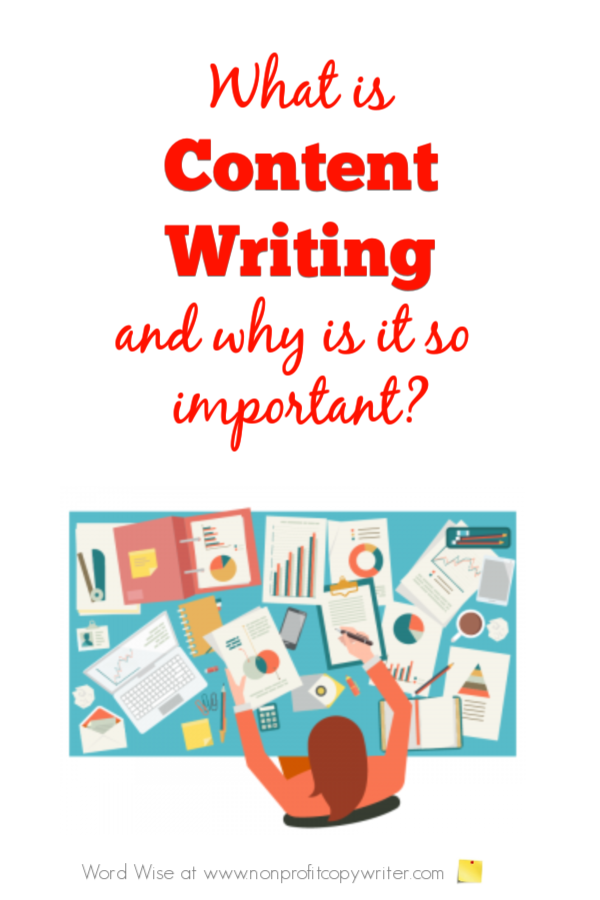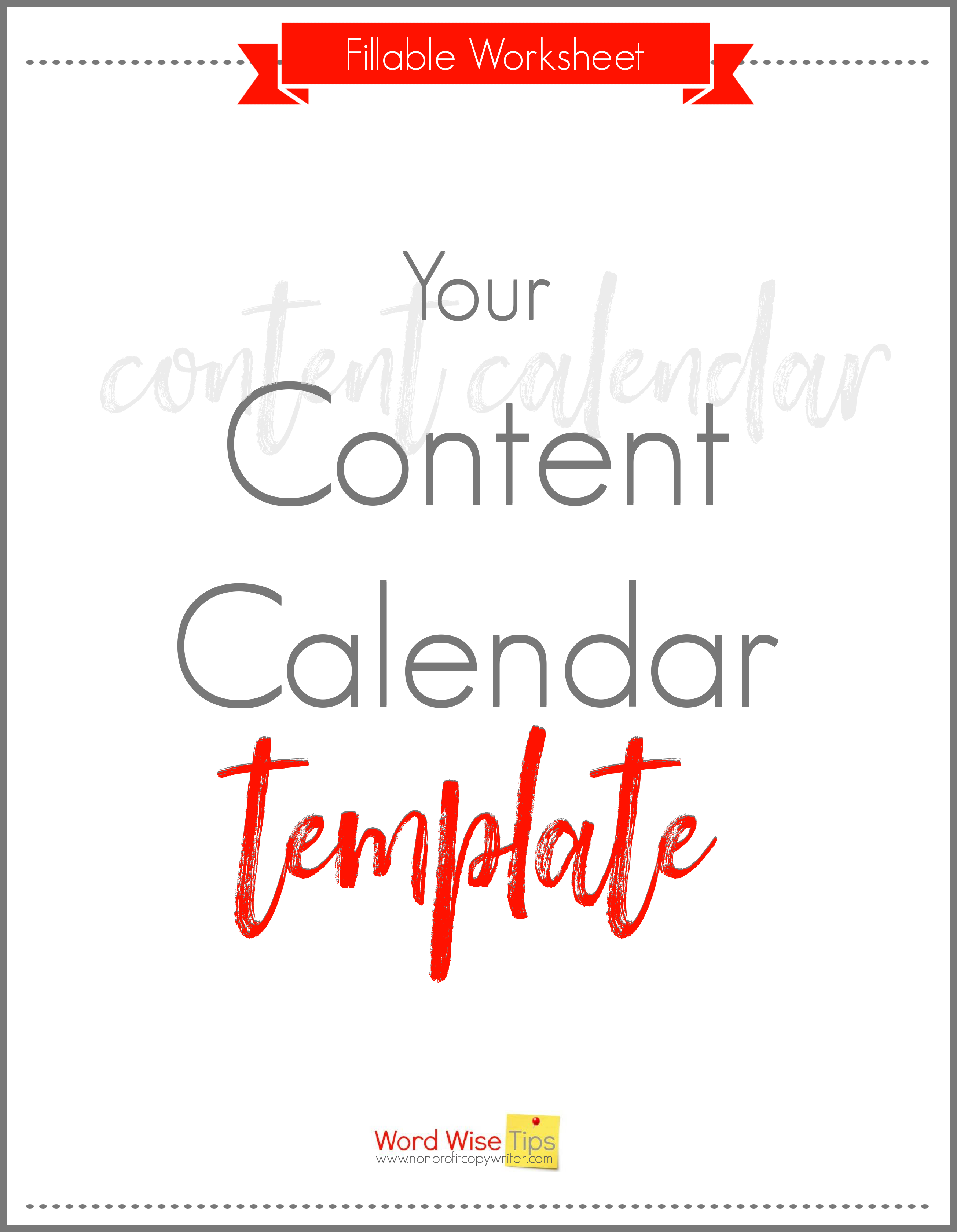Save Time: Get 5 Simple Writing Tips
you can put to use in 10 minutes
Content Writing: What It Is and Why It's Essential
Award-winning writer Kathy Widenhouse has helped hundreds of nonprofits and writers produce successful content , with 750K+ views for her writing tutorials. She is the author of 9 books. See more of Kathy’s content here.
Updated 8.21.25
Good content writing drives your communications.
But what exactly is “content”? You hear that word used a lot, whether you’re a business owner, leader, staffer – and even more so if you’re a writer.
When I first started writing, the term “content” puzzled me. Was it a particular style of writing? Or maybe it was certain kinds of writing projects. Every definition I looked up confused me more.
Over time, I have come to learn that the word “content” is used two ways.
1. Content is a General Term
Content is the sum of your communications
As an umbrella term, content refers to all the information your organization creates, publishes, and distributes.
Your content focuses on your niche, but communicates about that topic through various media and in various formats.
Your Niche. Your content targets your specific subject niche. If your business is about bees and beekeeping, then your content will focus on how to raise bees, equipment you need for beekeeping, beekeepers’ organizations, and so forth. Within that subject matter you used different content writing styles – some to persuade your readers (content copywriting), some to inform or inspire your readers, some for internal planning – exploring all aspects of your subject from all kinds of angles. But you won’t stray from your topic and write about an altogether different topic, like the philosophy of ancient Greek Marcus Aurelius (unless it’s a piece about Aurelius’ beekeeping experiences.)
Various Media. All that information – your content – is delivered in through various media. Purists say that content only refers to online information (websites, blogs, social media, digital products, sales pages, downloads.) But as a content writer myself, I take a broader view: content is any communication that has words, to include print and verbal presentations. If you want to be technical, you can distinguish between “online content,” “print content,” and “verbal content.”
Various Formats. Content is delivered through various formats. For example, an infographic is a piece of content. So is a grant application … a brochure … a speech by your executive director …a blog post or a white paper. (A good writer understands the differences between kinds of writing projects.)
2. Content is a Specific Term
Content is the make up of a specific piece
As a specific term, content refers to the combined components of a single project: the writing and design (layout and images).
The writer produces the words. The designer produces the layout and graphics.
While both writing and design contribute to the whole, I’m not alone when I say that the core of content is writing.
Plan and track your content with this fillable and re-usable Content Calendar Template
Why Good Content Writing Is Essential
Think of content as a car. It’s got a chassis (content’s equivalent of a layout or structure) and an engine (content’s equivalent of writing.)
The chassis is a structure, but by itself is immobile. The engine switches on and runs. In fact, when the engine is activated, it powers the entire vehicle – chassis and engine combined.
In the same way, a writing project’s layout and images provide structure, but words drive content. Good writing is the engine for a piece.
Take a webpage, for instance. A well-designed template provides the structure for the page, just as a car’s chassis provides the structure for the vehicle. But the writing is the engine that drives the webpage’s message. The writing and design work together.
Lest you doubt the importance of good content writing, take a look at a piece of content and ask this: would this content still be able to deliver its message if the design was removed? Sure.
But what if the words were removed? No.
Your words may not look pretty without the structure attached, but the words can still run.
That’s why writing good content is essential.
More Content Writing Tips
4 Types of Content: The Magic Is In the Mix ...
Learn To Write Content When You Learn To Write an Article ...
The 3 Best Content Ideas (In Any Niche) ...
Avoid These 5 Deadly Content Writing Mistakes ...
The Case for Short vs. Long Form Content ...
A Simple Content Calendar Template for Bloggers and Solopreneurs ...
Content Writer vs Copywriter: What’s the Difference?
Reach More Readers With Repurposed Content ...
The Skinny on Thin Content: Don’t Put Rankings Over Readers ...
Avoid Jargon in Your Content So Outsiders Feel Like Insiders ...
How to Write a Paragraph: Rules to Keep and One to Break ...
How to Build a Content Writing Strategy for Your Blog or Website ...
How to Create a Content Calendar ...
7 Different Types of Content Writing You Need to Master ...
What Is Content Writing? Eliminate Confusion with These FAQs ...
Copywriting vs Content Writing: What's the Difference?
What is Free Content and Why Should I Offer It?
6 outline formats to use to organize your content ...
Tips for writing a hook for your content ...
How to write a conclusion: 3 tips ...
6 Tips for Writing Powerful Endings ...
5 Web Content Copywriting Tips for Newbies ...
Identity Content: 3 Tips for Explaining Who You Are and What You Do ...
Get Powerful Content When You Ask this ONE Question ...
Repurposing Content: get 21 pieces of content from one ...
7 Content Ideas to Build Your Audience ...
Graphics and Copywriting Basics: A Simple Tutorial ...
3 Writing Tips to Help You DIY Graphics for Content ...
More Tips for Writing Content on our Pinterest board ...
Return from Content Writing: What It Is to Nonprofit Copywriter home
As an Amazon Associate I earn from qualifying purchases.
Share This Page

Named to 2022 Writer's Digest list
BEST GENRE/NICHE WRITING WEBSITE


Stop Wasting Time!
Grab your exclusive FREE guide, "5 Simple Writing Tips You Can Put to Use in 10 Minutes or Less"













